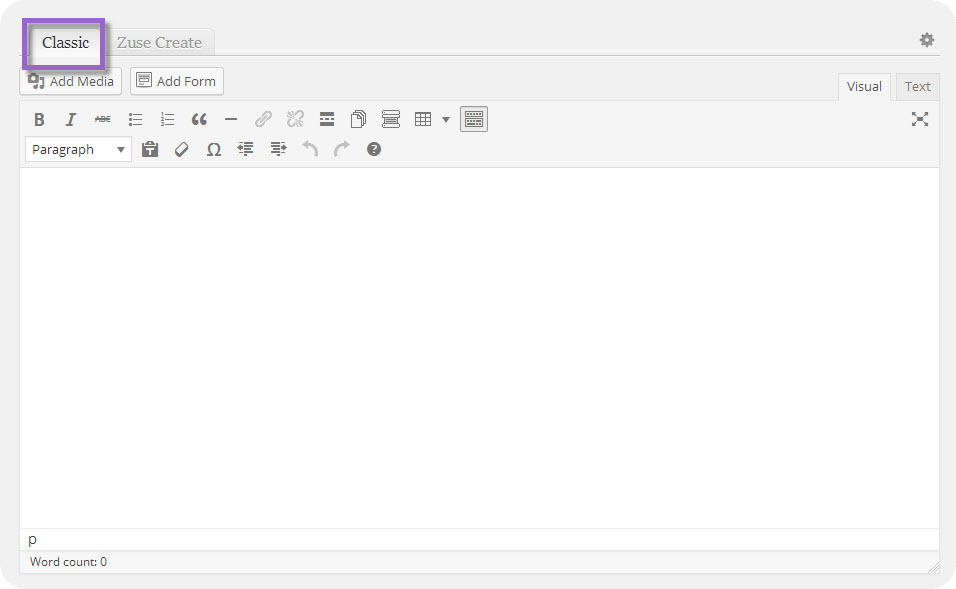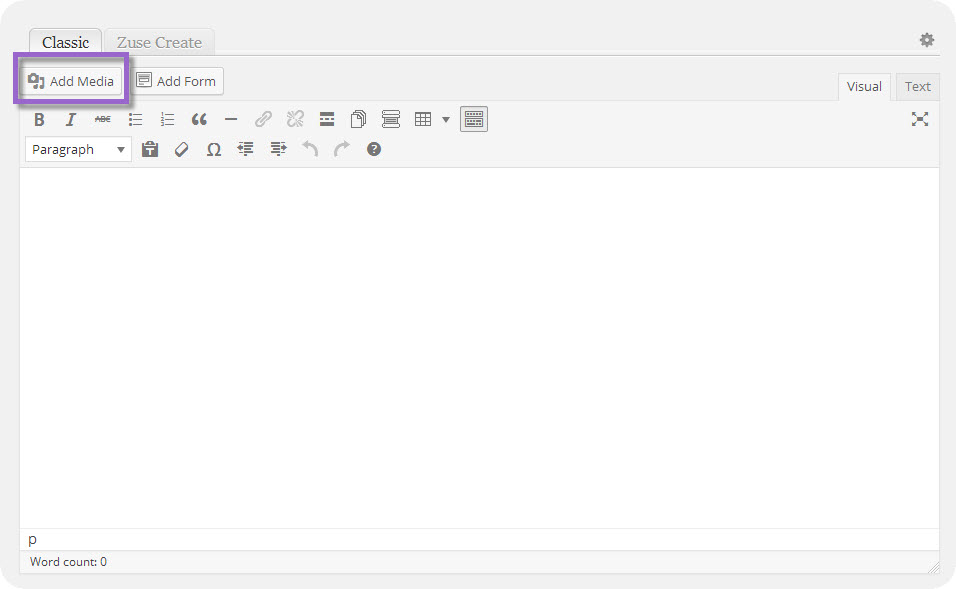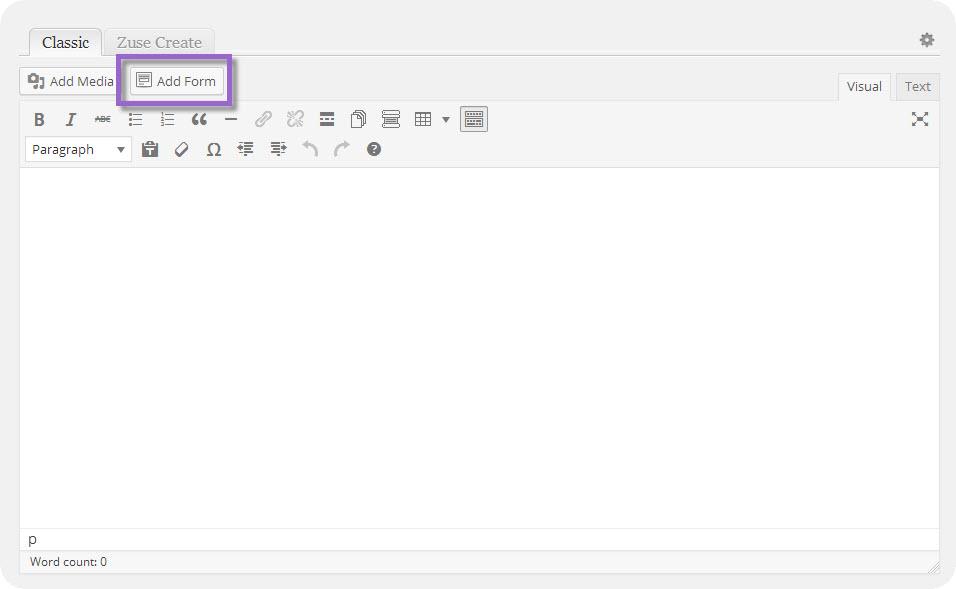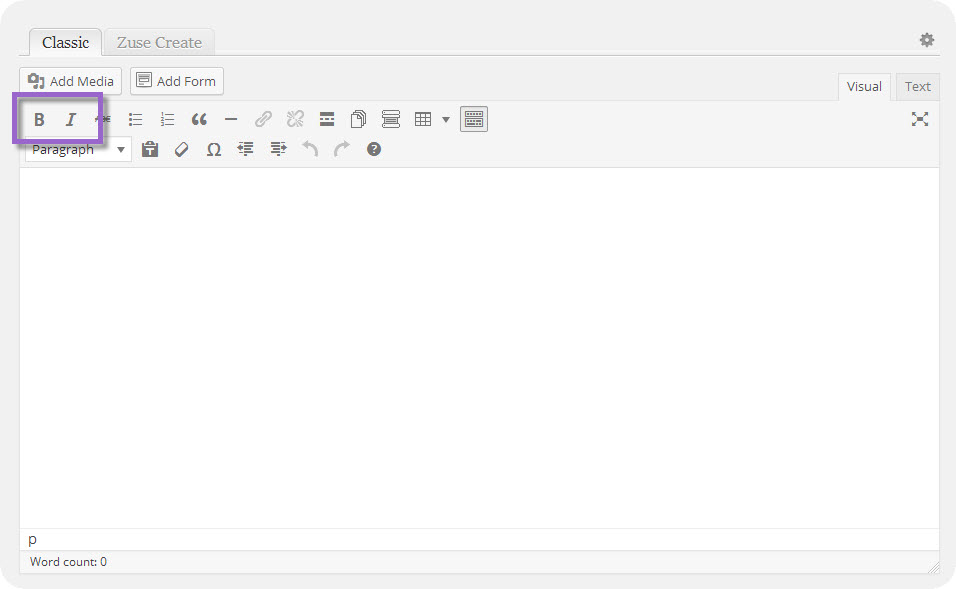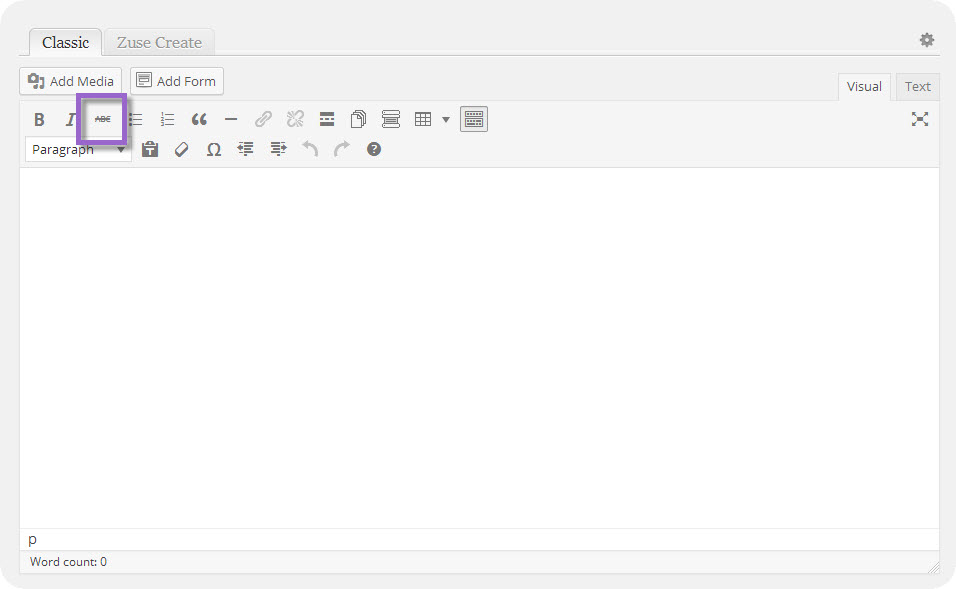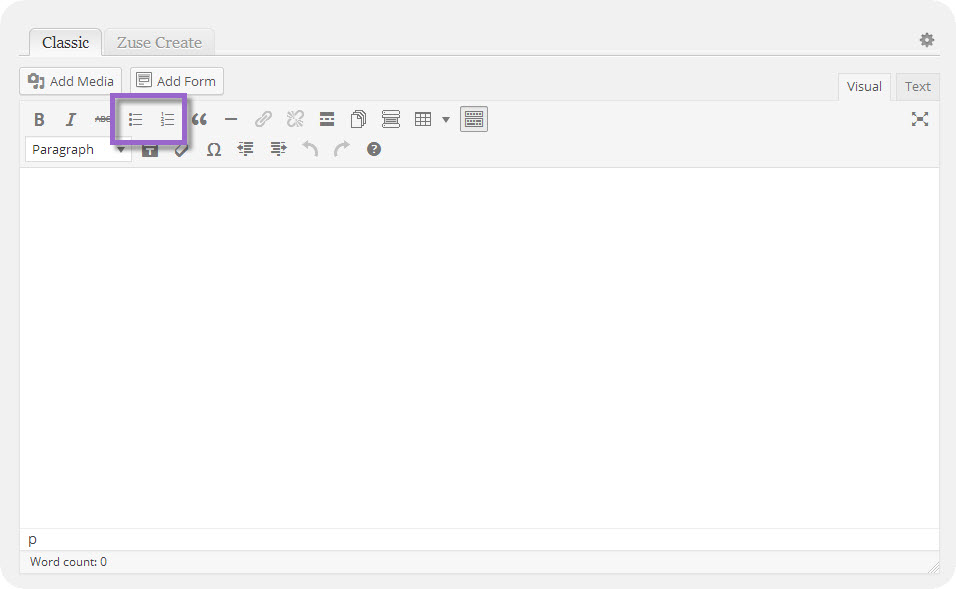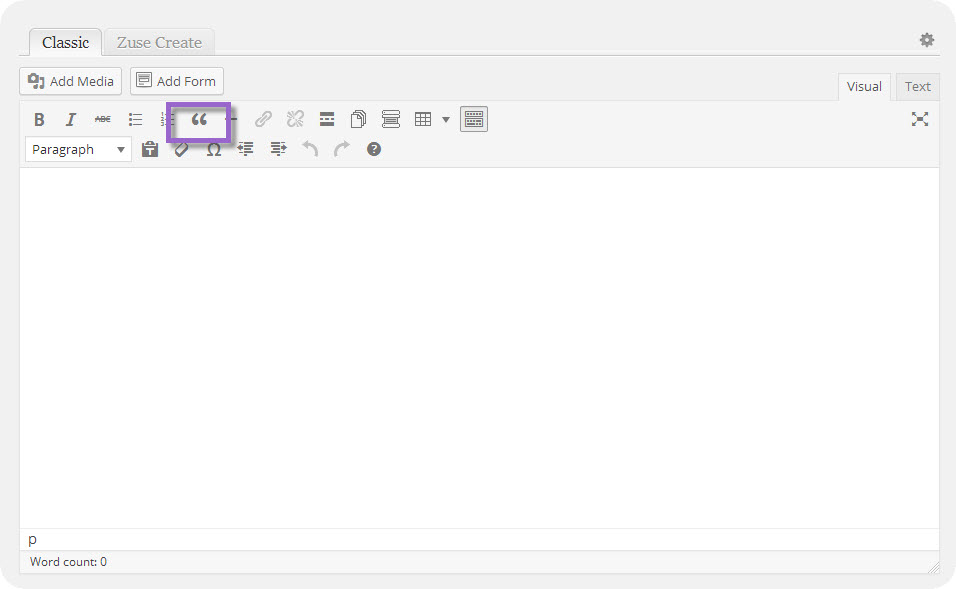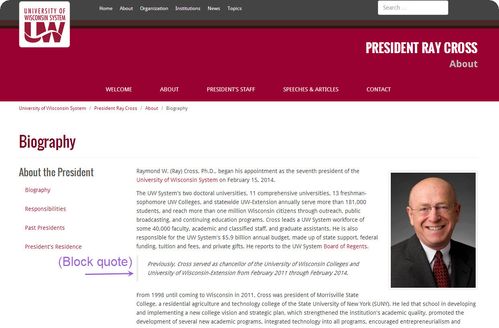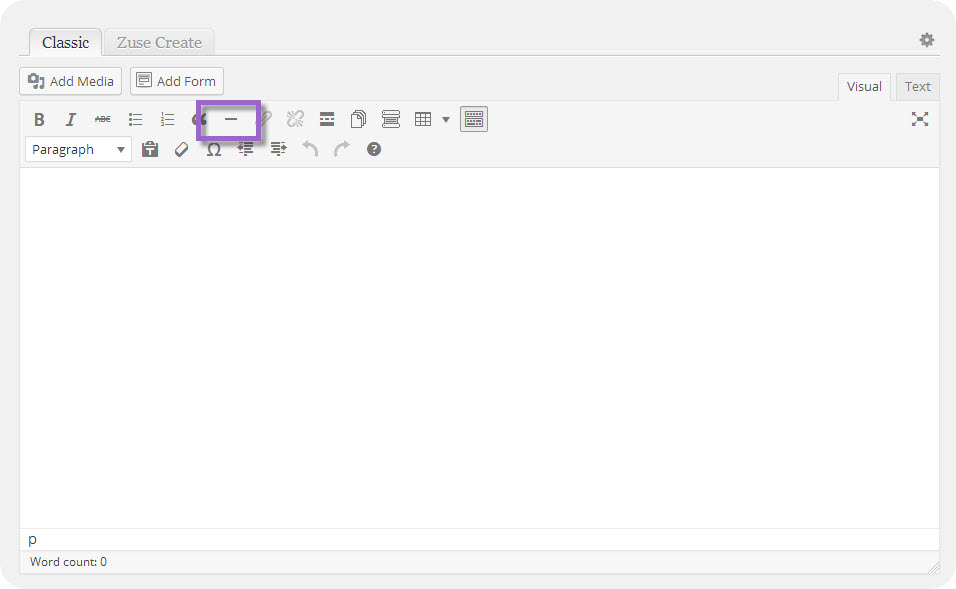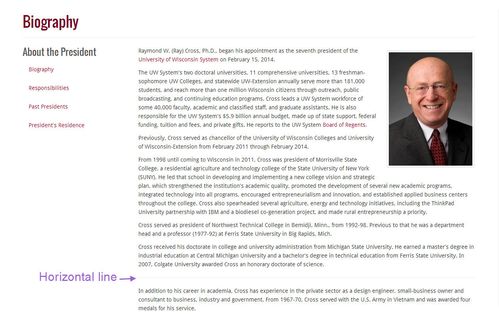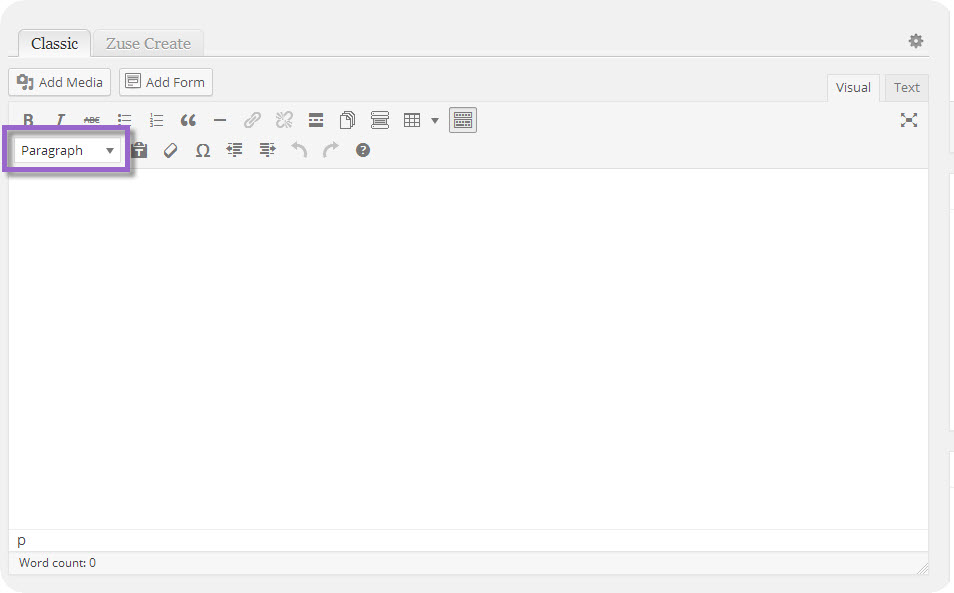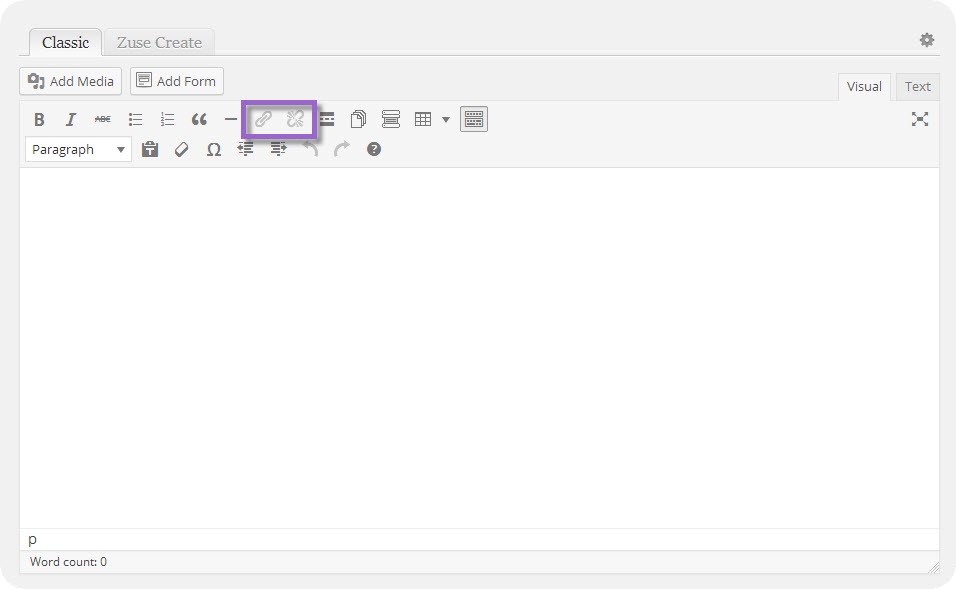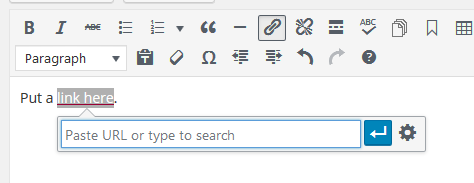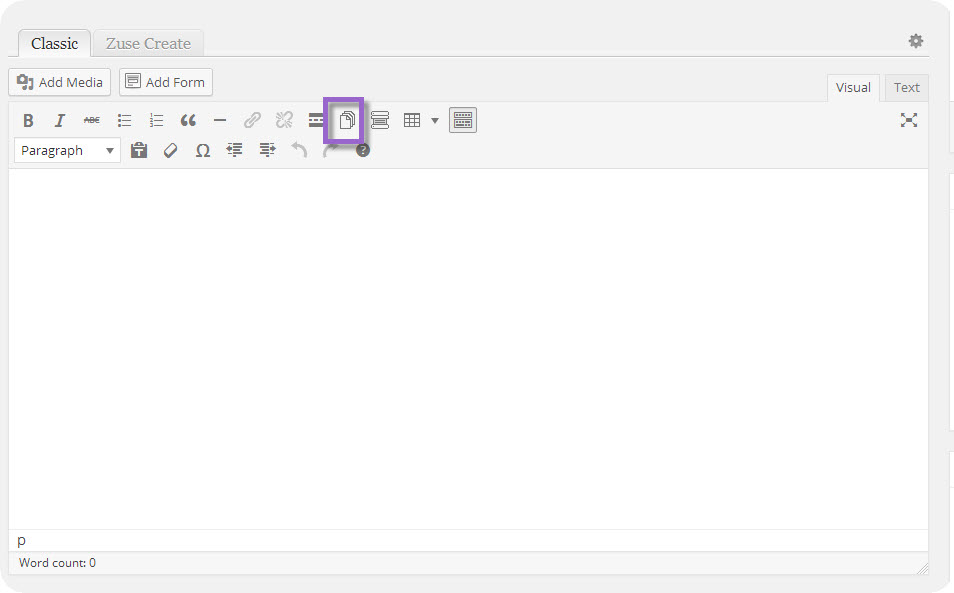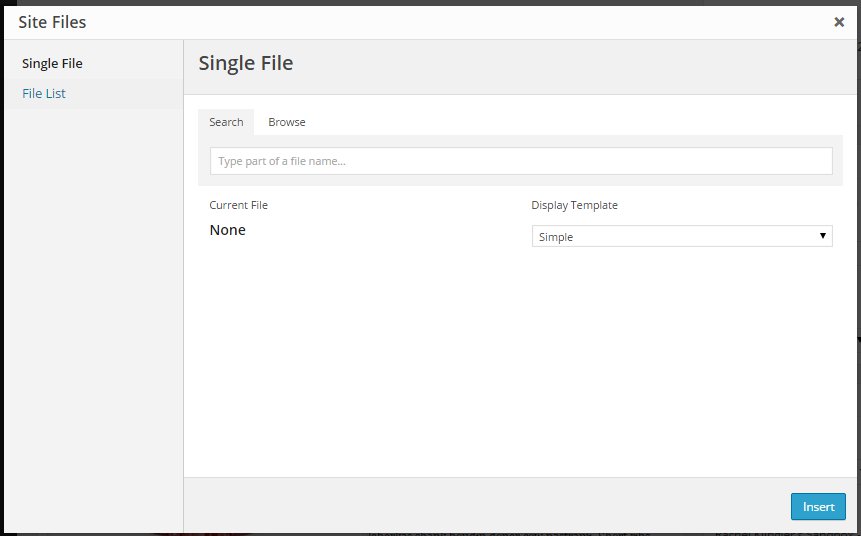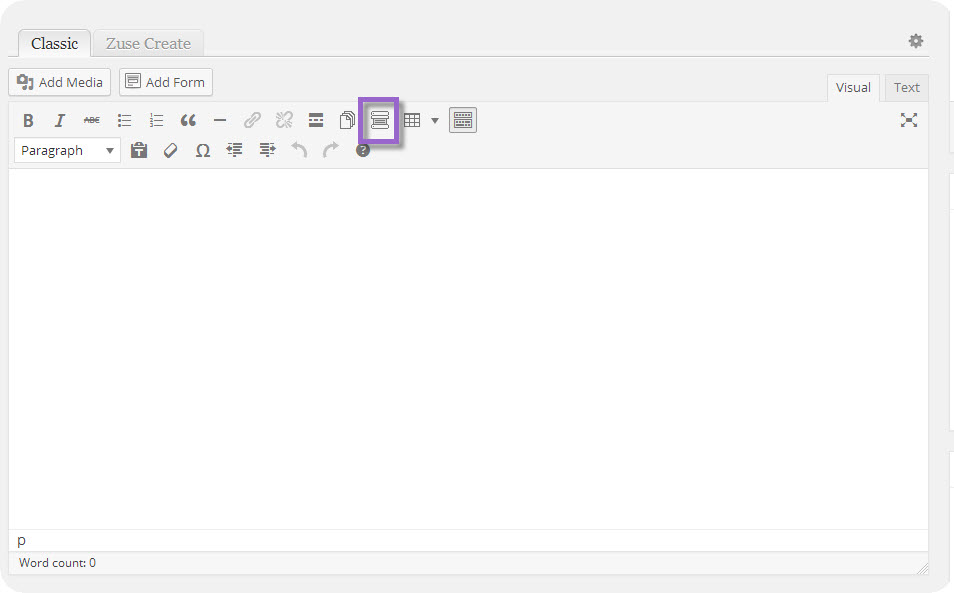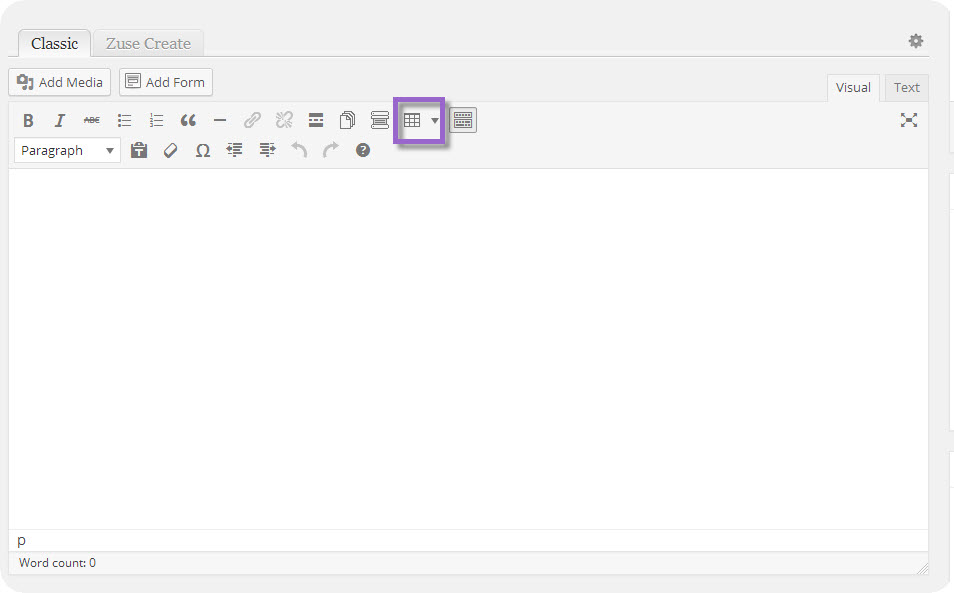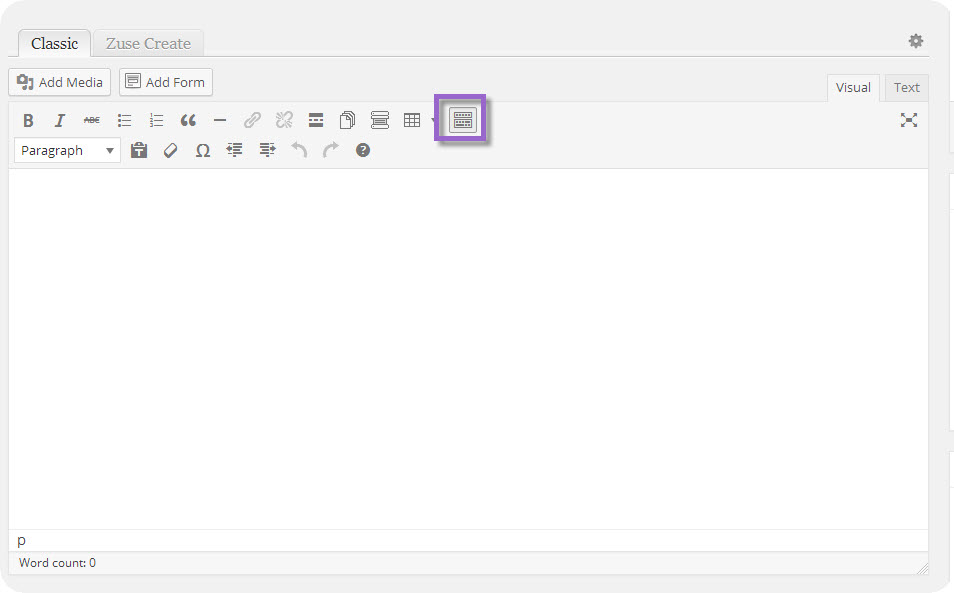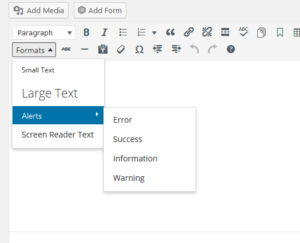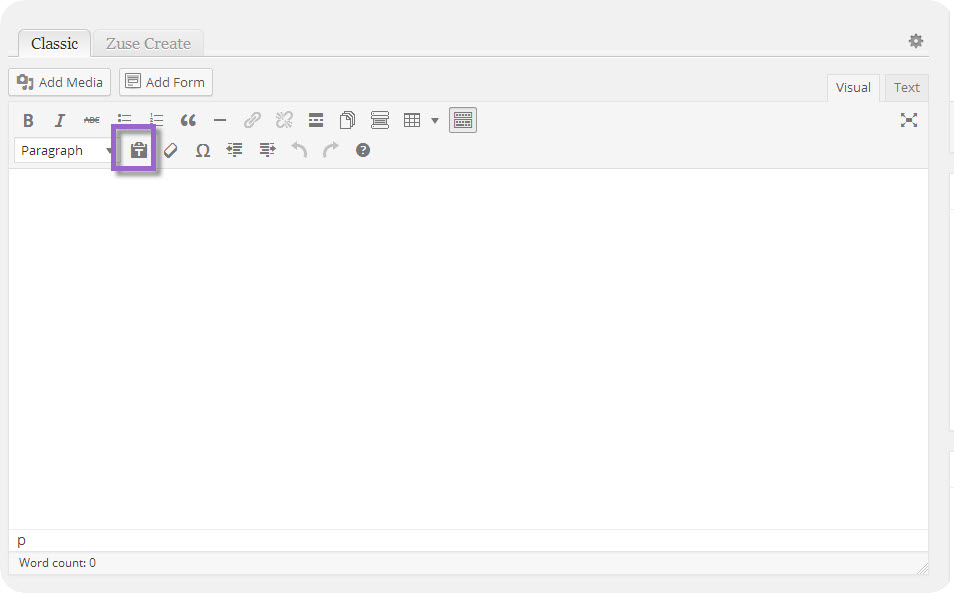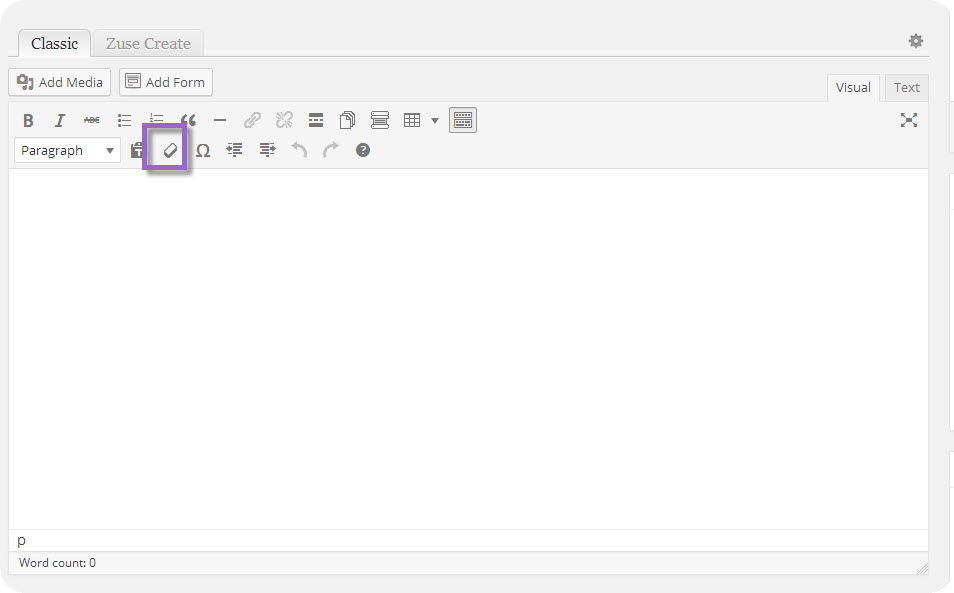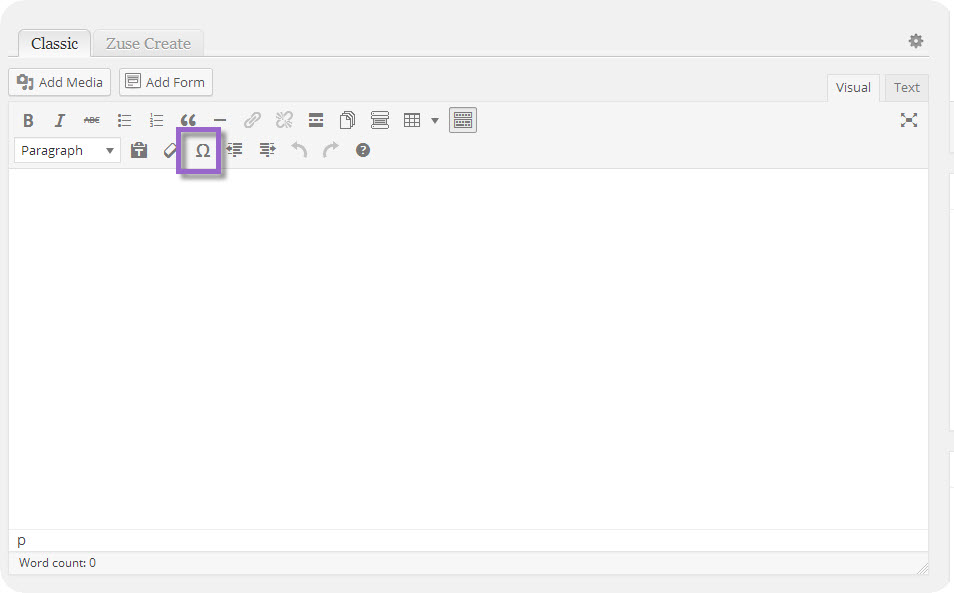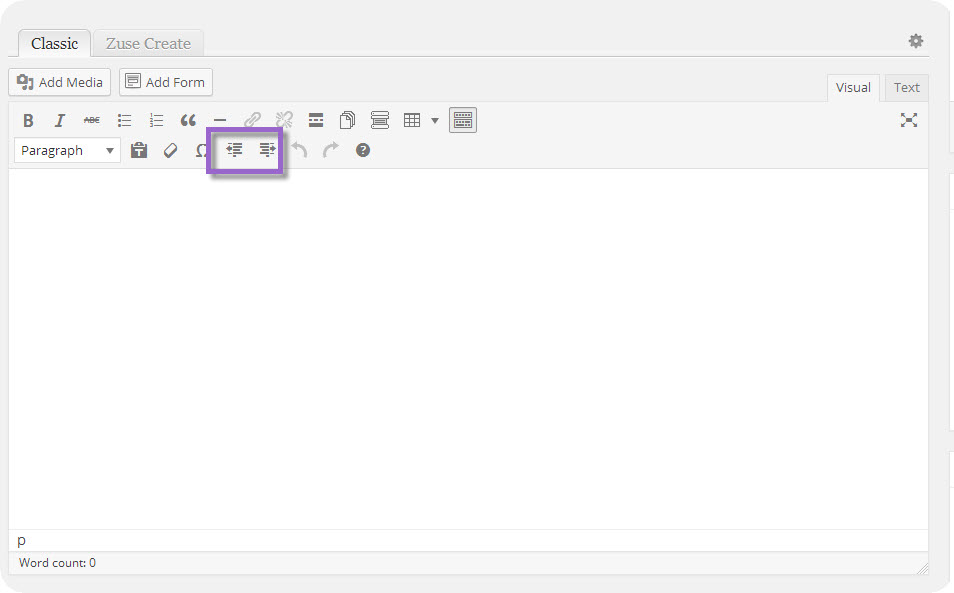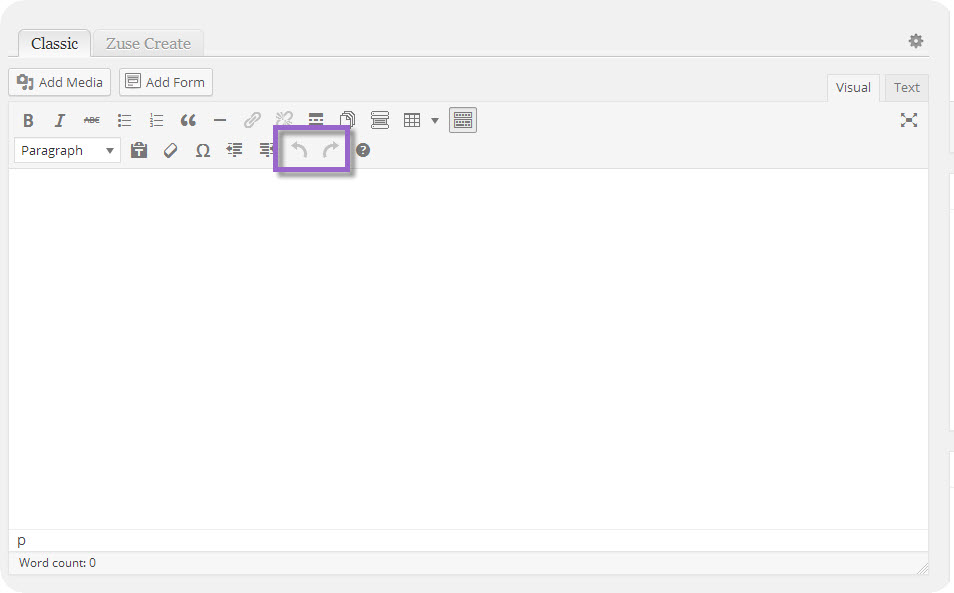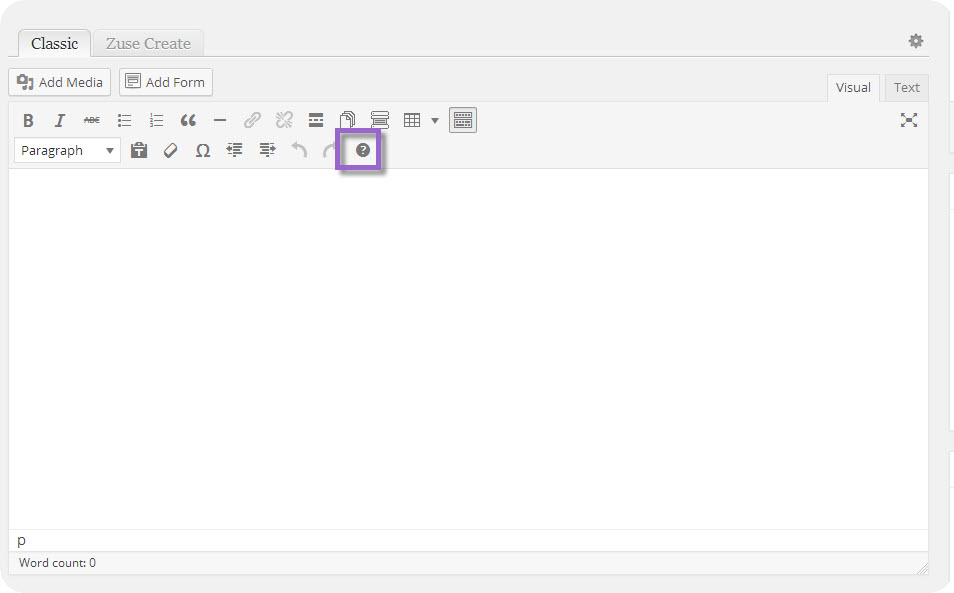Using the Classic Editor
The classic editor in Zuse is accessible by both editors and authors.
The classic editor appears in most places where text can be inserted. You can edit, add, delete, and format text in the classic editor, as well as add other types of content like media, documents, and tabs or accordions. Users who are familiar with Microsoft Word should be able to pick up on many of the key functionality of the classic editor.
Add Media
Add Media allows you to quickly insert an image, video, or audio clip right into the text.
More information about Adding Images to Your Page
Add a Form
Add Form, like the Add Media button, allows you to quickly insert a form you have already created into the text. (Authors are not able to insert or create forms.) More information about adding a form to a page.
Text Formatting
The Bold and Italics buttons will allow you to bold and italicize text.
The Strikethrough button allows you to create text that contains a line through it, sort of like it is crossed or marked out.
The Bulleted list and Numbered list buttons add bulleted and numbered lists easily and automatically to the text.
The Blockquote button allows you to format text into block quote formatting that stands out from the rest of the text. Block quotes are generally 3 sentences or less.
Horizontal line adds a horizontal line to the text. The line defines space on the page, and makes it easier for visitors to your site to understand the organization of the page.
The style drop-down menu allows you to create different types of text. See Add a Heading for more information and guidelines for using headings on your page.
Add Links
Insert/edit link and the remove link buttons allow you to add hyperlinks to the text. If you add a link, a box (Insert/edit link) appears that will help you insert a link.
Highlight the text that you want to be the link, and then click the Insert Link button. A box will appear where you can add the URL to link to. If you are linking to another page on your site, you can search for the title of that page. To make a link open in it's own tab, click the gear icon to change the settings of the link.
Remember, any website that we link to should either be a credible public institution or a third party that the UW System works closely with. Linking is an endorsement, so we all need to do our part to make sure we are careful in who we "endorse."
Adding Documents
Site files allows you to quickly insert a document or document list into the text. Selecting the button will pull up the Site Files pop-up. Use the menu on the left hand side to determine if you are adding a link to a single file or a list of files. For details about adding files, see Add a Link to a Single File (Inline), and Add a Document List.
After you choose the Insert button, shortcode (surrounded by square brackets) will be added to your page. Do not edit any of the document shortcode once you insert it into the text - if you need to change the link, delete the current shortcode, and re-use the Site Files button.
Tabs & Accordions
The Tabs/Accordion Menu button allows you to break up large amounts of text into tabs and accordions on a page. See Add a Tab or Accordion Menu for more information about creating Tab and Accordion menus.
Adding Tables
The Table button allows you to insert a table into the text. Remember, only tabular data should be entered into the cells. Tables should never be used to format and space text. It might look good on your screen but it will not look good once it is viewed on a smartphone or tablet. Only use tables for tabular data. For more information about styling tables, see Styling Tables.
Toggle Toolbar
The Toggle Toolbar icon allows you to open up the second row of the classic editor toolbar format icons if it is not already open.
Format Dropdown
Use the options in the Format Dropdown to create specific styles while keeping your site accessible. The options are:
- Small text: Use small text for warnings or disclaimers.
- Large text: This should be used in introductory text or other text you want to emphasize that isn't a heading. It shouldn't be used in please of the heading styles, but should be used when you want to have large text that isn't a heading. For example, see the Career Connect homepage.
- Alerts: Use these styles to emphasize notices and warnings on your site. This is especially good for items that are temporary. These work the same as the Notice Zuse Create modules, but you can now add them in Rich Text.
- Screen Reader Only text: When you apply this style to text, it won't be visible on the page, but will be visible to screen readers. Use this if you need to distinguish links for screen readers when it may be obvious for sighted users. Feel free to ask the web team if you think this may be a useful style for you but aren't sure.
Paste as Text
You should always use the Paste as text option when you are copying/pasting text into the classic editor. It will strip any and all pre-existing formatting from the text. Most pre-existing formatting will not paste over into Zuse correctly so it needs to be stripped out of the text. Make sure this button is selected BEFORE you paste into the editor.
Clear Formatting
The Clear formatting button allows you to erase the formatting you have added to the text while using the classic editor formatting options. (This is different from the Past as text option because the Paste as text clears formatting for the text you are pasting into the editor. The clear formatting button will strip out the formatting options you have chosen while editing the content in the Classic Editor.)
Special Character
The Special Character button will allow you to chose and insert a special character. Click on the button to view the list of options.
Indent
Decrease indent and increase indent allows you to indent (or decrease the indent) of text.
Undo & Redo
The Undo and Redo buttons allow you to undo and redo actions you completed in the Classic Editor.
Keyboard Shortcuts
Click on the Keyboard shortcuts button if you want to learn (or a reminder) of simple keyboard shortcuts you can use in the Classic Editor.
Related articles
